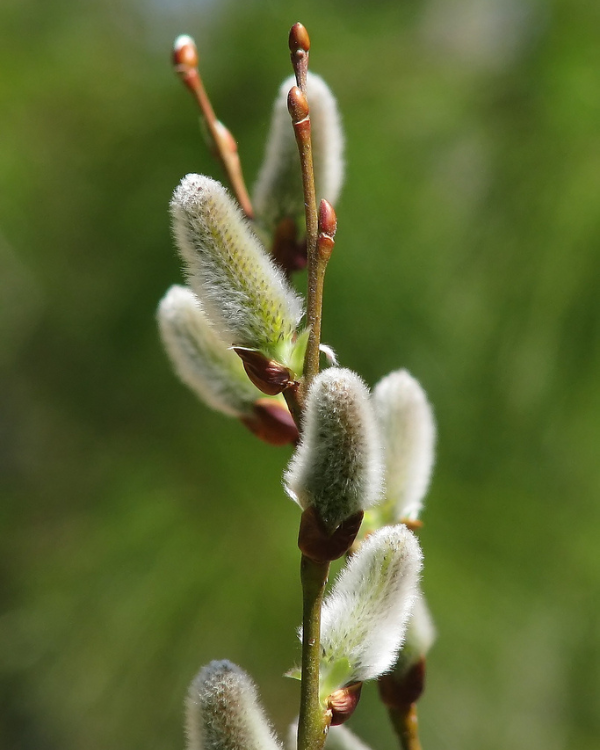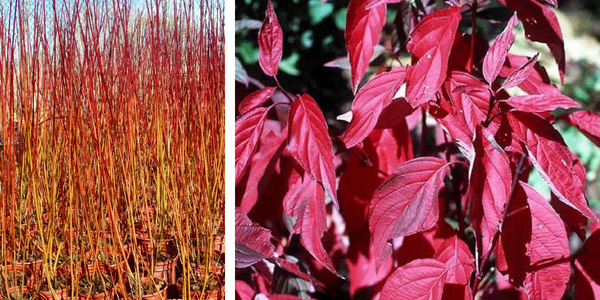In most cases, waterlogged soils are not considered favourable growing conditions for trees and shrubs because excess water can promote rot or hinder the roots from getting enough oxygen. But for those of you with soggy soil, have no fear! Here are our top three native shrubs that can help soak up some of that extra water in those pesky, wet areas!
Pussy willow (Salix discolor)
Pussy willows thrive in wet environments and are naturally found along shorelines, riverbanks, swamps and meadows. These water-loving shrubs can reach a size of about 15 feet tall and 10 feet wide, making them a wonderful addition for privacy.
Recognizable by their fuzzy, silver catkins that emerge in the late winter, these wind-pollinated flowers look like tiny cat paws and are a welcome sign that spring is on the horizon. Beyond late-winter interest, pussy willows also provide an early nectar source for our native pollinators and in the fall, the long, slender leaves turn a beautiful bright yellow.

Meadowsweet (Spiraea alba)
Meadowsweet’s natural habitat ranges from meadows to marshes, swamps, wetland margins and shorelines, so it’s safe to say that these shrubs love water! On average, their upright structure can reach a size of about four feet by four feet, making them great additions for smaller yards.
Meadowsweet has large, fragrant, cone-shaped clusters of white flowers with pink centres that bloom from June to September, making it a popular pollinator attraction. Meadowsweet is even the larval host for Spring Azure butterflies (Celastrina ladon)! The small, brown seed pods mature in the fall as the leaves turn a bright yellow and are eaten by many songbirds

Red osier dogwood (Cornus sericea)
If you’re walking along a shoreline, the bright red bark of the red osier dogwood (ROD) shrub is probably familiar to you! These hardy shrubs thrive almost anywhere with water, including swamps, riverbanks and shorelines, so they are an excellent shrub to plant in the low spots of your yard that catch a lot of water. ROD can reach a size of about six to eight feet tall and six to eight feet wide. These shrubs also have a rounded, spreading form, making them optimal for privacy.
Known for their bright red stems, ROD adds a pop of colour in the winter, with the red bark looking striking against a background of white snow. In the early spring, clusters of white flowers emerge. By the summer, white berries develop and are loved by many birds such as waxwings and finches. The red colour makes an appearance again in the fall, with the leaves turning a deep reddish-purple.

As you can see, having wet soil in your yard doesn’t need to stop you from planting the outdoor paradise of your dreams! With a wide variety of flowers, fall colour and winter interest, these water-loving shrubs will be a great addition to your home. Contact us to order your shrubs today!
Doreen Malapitan is the Residential Planting Programs Assistant at LEAF.
LEAF offers a subsidized Backyard Tree Planting Program for private property. The program is supported by the City of Toronto, the Regional Municipality of York, the City of Markham, the Town of Newmarket, the Regional Municipality of Durham, the Town of Ajax, the Township of Brock, the Municipality of Clarington, the City of Oshawa, the City of Pickering, the Township of Scugog, the Town of Whitby, Ontario Power Generation and Ontario Trillium Foundation.
